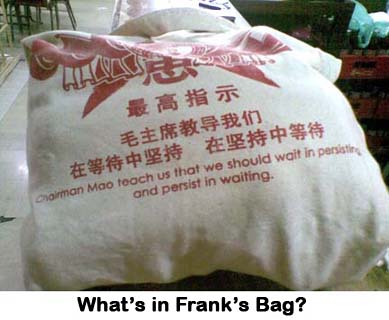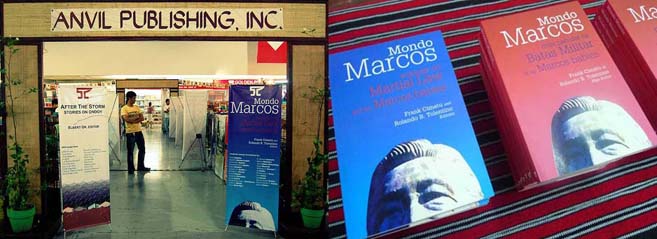31 December 2010

I brought my huge “Chairman Mao teach us that we should wait in persisting and persist in waiting” canvas bag to market. There I caught up with a balikbayan friend who was not actually into it but has time to spare and so we went.
We saw a lot of fruit vendors on the railing, selling guapples, chesa, zapote and anonas.
Because she was working in the US, she pointed at the anonas. “Anonas. This is the one they call the custard apple,” I said.
“Isn’t that the atis?”
“They’re similar. Atis is the sweet sop,” I said. I would have wanted her to ask, ‘What’s sop?’ “That’s what my elementary teacher told me as well. But they’re wrong. Look, I researched on this. It is also called by the vendors as “pandagdag” because people don’t really eat them.”
“Ha ha,” she said as a conversation pandagdag.
“Yeah. It reminds me of a poet. Alma Anonas-Carpio,” I said.
“It is sad,” she said.
“Her poems? Yeah,” I said. “No, the fruit. The way it looks.”
All that time I was asking the price of the fruits as we walk away from the city center. It seems that the price got higher as we moved away. The guapple which was P80 per kilo ended up at P100 as we walked.

“A lot of our fruits lately came from there. Five years ago, dragonfruit was the ultimate pandagdag. Now I think Ilocos is big into growing dragonfruit,” I said.
At that moment, I bought guapple, zapote, anonas and atis. While we were buying muskmelons, an old woman was haggling and we were siding with her. The old woman was a pro in haggling and I noticed she was able to shave P50 from her three fruits. This haggling is killing me.
“Does strawberry count,” my friend asked and laughed. It was selling for P60 for ten pieces.
I remembered that same argument years ago if indeed strawberry is a fruit (“It’s not a straw. It’s not a berry.”) I learned that it should be a pseudo-fruit.
I also recalled what my botanist friend told me about fruits as those containing seeds as opposed to vegetables — ergo tomatoes, peppers, cucumbers, Baguio beans, and peas are fruits. I bought peas and blueberries.
All the time, the sellers were handing me the fruits in plastic bags and I have to give them back. I see other buyers with their green bags accepting these plastics like they’re nothing. I mean, what’s the point of getting a green bag when you have lots of plastic bags inside? Token environmentalism talaga.
“Hey,” I told my lady friend. “The French call potatoes pomme de terre, apples of the earth. Should we include them?”
But she was laughing at something and pointing at the “Sagada Apples”. “Ay naku. You know how they are. Sagada oranges have become famous so they started branding other fruits as Sagada grapes and Sagada apples.”
Then we saw a case of Kiwi at P20 per. We decided not to buy.
“You know in the States, my friends also buy 12 round fruits. Clementine and grapefruit. You don’t have them here,” she said.
What I remembered were tangerines. Especially Saul Bellow’s play of words in “Dean’s December”. I think about “noli me tangerines” referring to huge boobs.
“Davao pomelo is much better,” I reminded her.
Then we saw a green zeppelin-shaped fruit. “What’s that,” I asked the vendor.
“Kondol,” she said.
My friend laughed. “So that is the kondol in the Bahay Kubo. What does it taste? Is that what they turn into candies?”
That is what she bought.
Tomorrow, she promised to have her own 12 fruits and said that she will ask another person to accompany her.
“You are too opinionated,” she said.

 Home | Aims and Objectives of Solidarity Philippines Australia Network | About Kasama
Home | Aims and Objectives of Solidarity Philippines Australia Network | About Kasama 
Search the SPAN Web